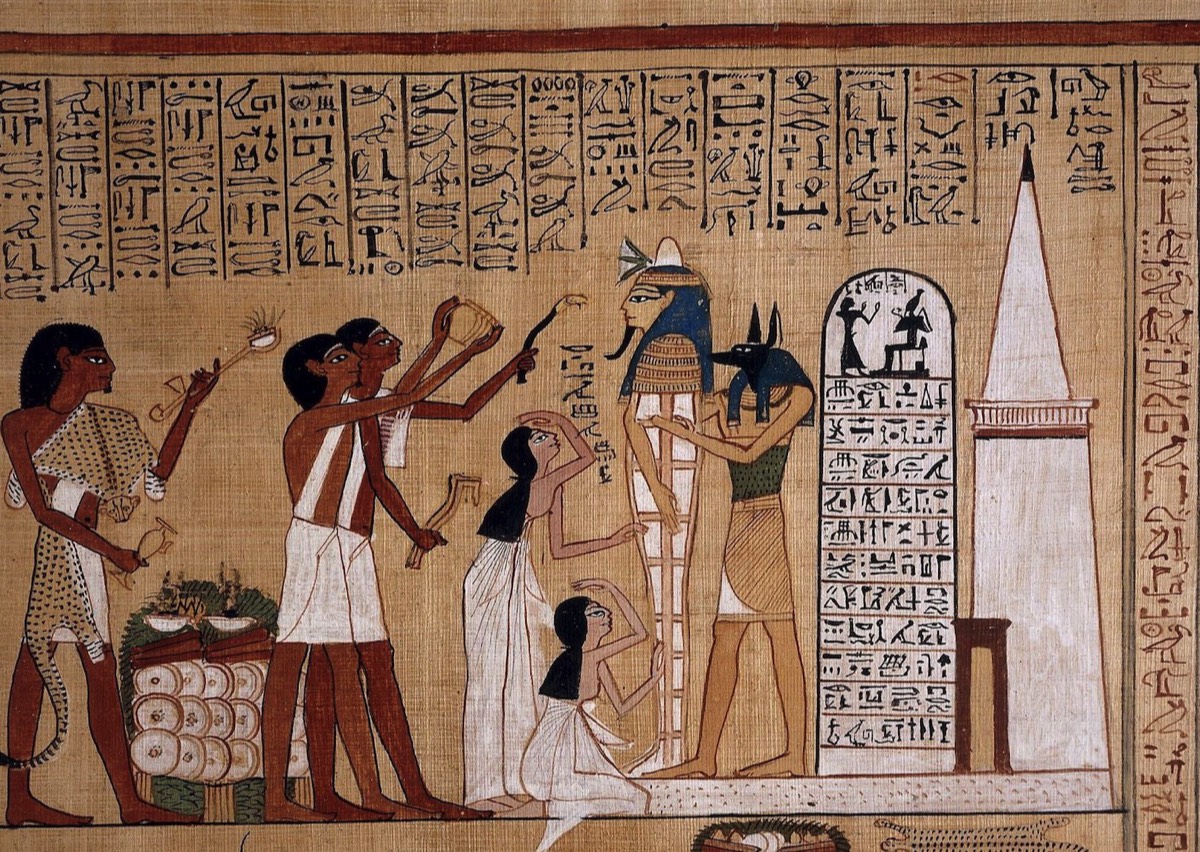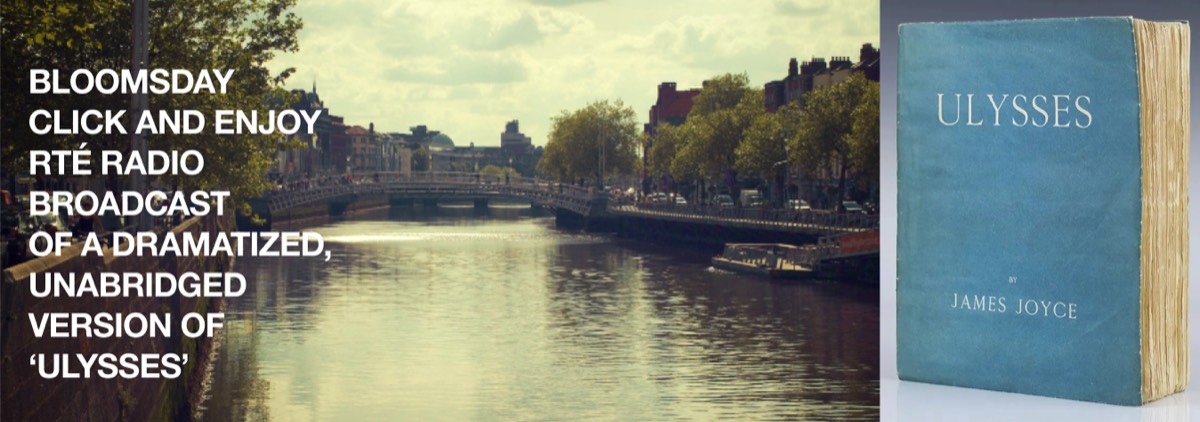JAMES JOYCE and EGYPT is the focus of BLOOMSDAY 2025
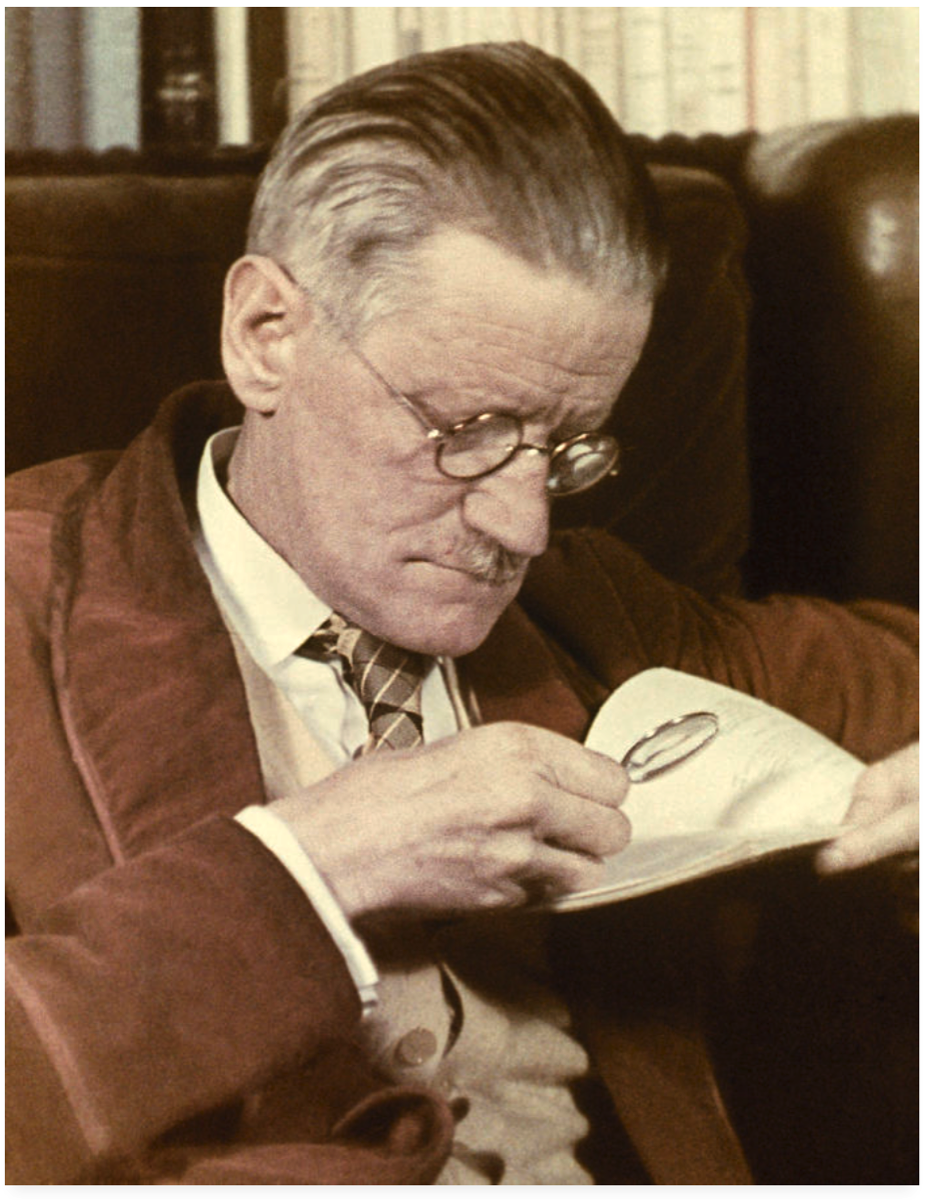
Above: James Joyce, Paris, "Finnegans Wake" published in 1939
Out of the entirety of Ulysses, this is the only passage of which James Joyce produced a voice recording and it is about ancient EGYPT
“It seemed to me that I had been transported into a country far away from this country, into an age remote from this age, that I stood in ancient Egypt and that I was listening to the speech of some high priest of that land addressed to the youthful Moses… And it seemed to me that I heard the voice of that Egyptian high priest raised in a tone of like haughtiness and like pride. I heard his words and their meaning was revealed to me…-- You pray to a local and obscure idol: our temples, majestic and mysterious, are the abodes of Isis and Osiris, of Horus and Ammon Ra.”
Click link FROM THE “AEOLUS” EPISODE OF ULYSSES, 1924
Joyce found exploration in “Finnegans Wake” of Race Memory and Time as a Continuum in Language has an affinity with the Timeless Language in “The Coming Forth by Day” or “The Book of the Dead”.
In his essay on Joyce’s “Work in Progress”, Samuel Beckett suggested the word “apprehending,” so one is reading not for the meaning of the words themselves but for the associations produced by their sounds.
The audio (recorded in 1929) is of James Joyce reading the Anna Livia Plurabelle section of Finnegans Wake. It's a chattering dialogue between two washer women who as night falls become a tree and a stone.
“It seemed to me that I had been transported into a country far away from this country, into an age remote from this age, that I stood in ancient Egypt and that I was listening to the speech of some high priest of that land addressed to the youthful Moses… And it seemed to me that I heard the voice of that Egyptian high priest raised in a tone of like haughtiness and like pride. I heard his words and their meaning was revealed to me…-- You pray to a local and obscure idol: our temples, majestic and mysterious, are the abodes of Isis and Osiris, of Horus and Ammon Ra.”
Click link FROM THE “AEOLUS” EPISODE OF ULYSSES, 1924
Joyce found exploration in “Finnegans Wake” of Race Memory and Time as a Continuum in Language has an affinity with the Timeless Language in “The Coming Forth by Day” or “The Book of the Dead”.
In his essay on Joyce’s “Work in Progress”, Samuel Beckett suggested the word “apprehending,” so one is reading not for the meaning of the words themselves but for the associations produced by their sounds.
The audio (recorded in 1929) is of James Joyce reading the Anna Livia Plurabelle section of Finnegans Wake. It's a chattering dialogue between two washer women who as night falls become a tree and a stone.
The importance of truth held in the sound of language is highlighted by the Penang poet Cecil Rajendra’s “My Message”, “And now you ask. What is my message. I say with Nabokov. I am a poet. not a postman. I have no message.” click to listen.
Sargon Boulus the Iraqi-Assyrian poet explores language as race memory: “So, when I write my poetry in Arabic . . . sometimes I feel that I am really writing in [all the dead languages that had seen their day centuries ago], because I believe, finally, that any language contains all the dead memories of the races who contributed to it.”
Finnegans Wake and the Egyptian Book of the Dead
Joyce actively sought to have someone write an essay explaining the Wake’s affinity with “Chapters of Coming Forth by Day”. (Letters, I, 281; JJ 13-14).
“The oaks of ald now they lie in peat yet elms leap where askes lay. Phall if you but will, rise you must: and none so soon either shall the pharce for the nunce come to a setdown secular phoenish.” (I.1.4 )
In Ancient Egyptian death rituals incantations in hieroglyphic and hieratic scripts on papyrus and other mediums, were intended to help the deceased complete his or her journey to the afterlife by sunrise.
The deceased would be, like Osiris, "healed cured and embalsemate, pending a rouseruction of his bogey" (498.36)
19th-century British Egyptologist Ernest Wallis Budge’s first English-language edition was published in 1899 and James Joyce had a copy of this book.
Sargon Boulus the Iraqi-Assyrian poet explores language as race memory: “So, when I write my poetry in Arabic . . . sometimes I feel that I am really writing in [all the dead languages that had seen their day centuries ago], because I believe, finally, that any language contains all the dead memories of the races who contributed to it.”
Finnegans Wake and the Egyptian Book of the Dead
Joyce actively sought to have someone write an essay explaining the Wake’s affinity with “Chapters of Coming Forth by Day”. (Letters, I, 281; JJ 13-14).
“The oaks of ald now they lie in peat yet elms leap where askes lay. Phall if you but will, rise you must: and none so soon either shall the pharce for the nunce come to a setdown secular phoenish.” (I.1.4 )
In Ancient Egyptian death rituals incantations in hieroglyphic and hieratic scripts on papyrus and other mediums, were intended to help the deceased complete his or her journey to the afterlife by sunrise.
The deceased would be, like Osiris, "healed cured and embalsemate, pending a rouseruction of his bogey" (498.36)
19th-century British Egyptologist Ernest Wallis Budge’s first English-language edition was published in 1899 and James Joyce had a copy of this book.
The Papyrus of Ani in the British Museum belongs to the tomb of Ani, a royal scribe who lived in Luxor, formerly known as Thebes, the city of the god Ammon, during the reign of Pharaoh Ramesses II in around BCE 1250.
Contemporary Egyptian writer Youssef Rakha speaks of the “survival of these texts in the Old Testament, in Egyptian proverbs, in traditional musical forms such as mawwal”.
John Bishop in ‘Joyce’s Book of the Dark’ writes “Joyce reconstructs exactly, from the internal [evidence] of the corpse itself, the kind of life that Tutankhamun and his contemporaries imagined would follow death.
John Bishop sees the ‘plot’ of the Book of the Dead, its ritual enactment of the movement towards resurrection of its named central character, Osiris-Ani or Osiris-Nu as the point of radical affinity with “Finnegans Wake”: a succession of events of dramatic consequence supposed to befall his corpse between death and resurrection…a linearly progressive account chronicling the heliotropic movement towards resurrection of a man lying inert in bed. [124]
The rite of Egyptian interment is conducted thus in the Wake: ‘So may the priest of the seven worms and scalding tayboil, Papa Vestray, come never anear you as your hair grows wheater beside the Liffey that’s in Heaven. Hep, hep, hurrah there! Hero! Seven times thereto we salute you. The whole bag of kits … concerning thee in the matter of thy tombing. Howe of shipmen, steep wall! [26.6-24]
The cleansing of the body in “The Book of the Dead”, incorporated in ‘The Opening of the Mouth’ chapter, is mimicked by Joyce: “Unclean you are not. Outcaste thou are not. … Untouchable is not the scarecrown on you. You are pure. You are pure. You are in your puerity. You have not brought stinking members into the house of Amanti….Your head has been touched by the god Enel-Rah and your face has been brightened by the goddess Aruc-Ituc. Return, sainted youngling, and walk once more among us. [237.16-30]
Contemporary Egyptian writer Youssef Rakha speaks of the “survival of these texts in the Old Testament, in Egyptian proverbs, in traditional musical forms such as mawwal”.
John Bishop in ‘Joyce’s Book of the Dark’ writes “Joyce reconstructs exactly, from the internal [evidence] of the corpse itself, the kind of life that Tutankhamun and his contemporaries imagined would follow death.
John Bishop sees the ‘plot’ of the Book of the Dead, its ritual enactment of the movement towards resurrection of its named central character, Osiris-Ani or Osiris-Nu as the point of radical affinity with “Finnegans Wake”: a succession of events of dramatic consequence supposed to befall his corpse between death and resurrection…a linearly progressive account chronicling the heliotropic movement towards resurrection of a man lying inert in bed. [124]
The rite of Egyptian interment is conducted thus in the Wake: ‘So may the priest of the seven worms and scalding tayboil, Papa Vestray, come never anear you as your hair grows wheater beside the Liffey that’s in Heaven. Hep, hep, hurrah there! Hero! Seven times thereto we salute you. The whole bag of kits … concerning thee in the matter of thy tombing. Howe of shipmen, steep wall! [26.6-24]
The cleansing of the body in “The Book of the Dead”, incorporated in ‘The Opening of the Mouth’ chapter, is mimicked by Joyce: “Unclean you are not. Outcaste thou are not. … Untouchable is not the scarecrown on you. You are pure. You are pure. You are in your puerity. You have not brought stinking members into the house of Amanti….Your head has been touched by the god Enel-Rah and your face has been brightened by the goddess Aruc-Ituc. Return, sainted youngling, and walk once more among us. [237.16-30]
Above: A depiction of the Opening of the Mouth ritual, in which a mummy is symbolically brought to life. Papyrus of Hunefer, c. 1280 BC. Photograph: Trustees of the British Museum
The Wake proceeds towards its conclusion with: ‘Let Eiven bemember for Gates of Gold for their fadeless suns berayed her. Irises, Osirises! B thy mouth given unto thee! … Overseer of the house of the oversire of the seas, Nu-Men, triumphant, sayeth: Fly as the hawk, cry as the corncrake. Ani Latch of the postern is thy name; shout! [-] My heart, my mother! My heart, my coming forth of darkness! [493.27-35]
Visit the Egyptian Galleries at the Chau Chak Wing Museum at the University of Sydney.
https://www.sydney.edu.au/museum/whats-on/exhibitions/the-egyptian-galleries.html
Visit the Egyptian Galleries at the Chau Chak Wing Museum at the University of Sydney.
https://www.sydney.edu.au/museum/whats-on/exhibitions/the-egyptian-galleries.html
BLOOMSDAY is the 16th of June 1904 and is the day on which all the action of James Joyce’s novel Ulysses takes place. “Ulysses” by James Joyce was published in Paris in 1922 and every year around the world people gather to read aloud extracts from a book.
1904 map of Joyce's Dublin - 24 locations with page references to "Ulysses"
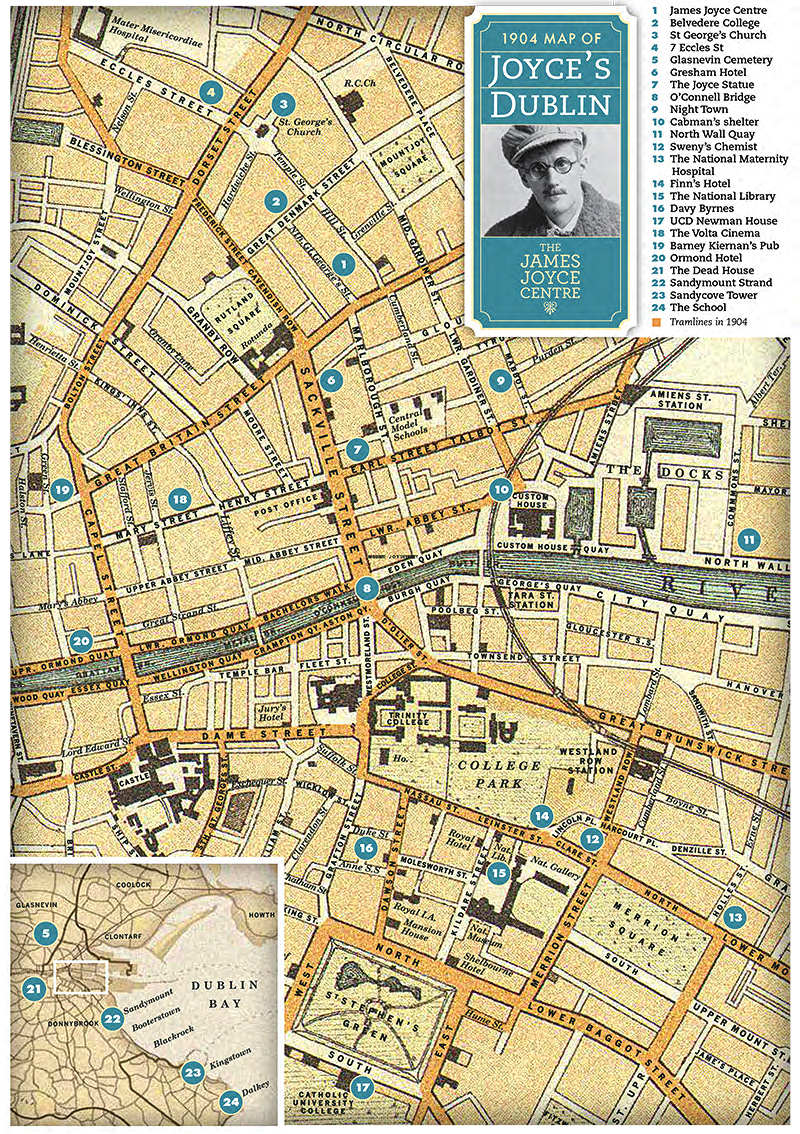
1
James Joyce Cultural Centre |
35 North Great George’s Street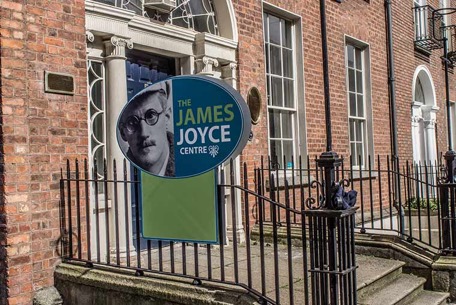
The permanent exhibit includes the door to number 7 Eccles Street, home of Leopold and Molly Bloom . "I want to give a picture of Dublin so complete that if the city suddenly disappeared from the earth it could be reconstructed out of my book." - James Joyce in conversation with Frank Budgen.
James Joyce Cultural Centre |
35 North Great George’s Street

The permanent exhibit includes the door to number 7 Eccles Street, home of Leopold and Molly Bloom . "I want to give a picture of Dublin so complete that if the city suddenly disappeared from the earth it could be reconstructed out of my book." - James Joyce in conversation with Frank Budgen.
2
Belvedere College |
Great Denmark Street

James Joyce attended Belvedere from 1893-98. In “A Portrait of the Artist as a Young Man” Joyce has his fictional counterpart, Stephen Dedalus, ruminate on the prospect of becoming a Jesuit while at Belvedere.
Belvedere College |
Great Denmark Street

James Joyce attended Belvedere from 1893-98. In “A Portrait of the Artist as a Young Man” Joyce has his fictional counterpart, Stephen Dedalus, ruminate on the prospect of becoming a Jesuit while at Belvedere.
3
St George’s Church |
Hardwicke Place
 James Joyce includes St. George’s Church and its bell-ringing in “Ulysses”. The bells “ tolled the hour: loud dark iron. Heigho! Heigho! Heigho!"
James Joyce includes St. George’s Church and its bell-ringing in “Ulysses”. The bells “ tolled the hour: loud dark iron. Heigho! Heigho! Heigho!"
St George’s Church |
Hardwicke Place

4
Number 7 Eccles Street
The home of Leopold and Molly Bloom and where Bloom begins and ends his wanderings in Ulysses. Joyce visited this house when he went to see his friend John Francis Byrne who lived here in 1909.
Read Breakfast at 7 Eccles Street ULYSSES CALYPSO 65-85
Number 7 Eccles Street
The home of Leopold and Molly Bloom and where Bloom begins and ends his wanderings in Ulysses. Joyce visited this house when he went to see his friend John Francis Byrne who lived here in 1909.
Read Breakfast at 7 Eccles Street ULYSSES CALYPSO 65-85
5
Glasnevin Cemetery
Paddy Dignam and Michael Cusack (the Citizen) are buried here and Joyce’s father John Stanislaus Joyce. “Mr Bloom walked unheeded along his grove by saddened angels, crosses, broken pillars, family vaults, stone hopes praying with upcast eyes, old Ireland's hearts and hands.”.
Read Dignams’s Funeral ULYSSES HADES 107-147
Glasnevin Cemetery
Paddy Dignam and Michael Cusack (the Citizen) are buried here and Joyce’s father John Stanislaus Joyce. “Mr Bloom walked unheeded along his grove by saddened angels, crosses, broken pillars, family vaults, stone hopes praying with upcast eyes, old Ireland's hearts and hands.”.
Read Dignams’s Funeral ULYSSES HADES 107-147
6
Gresham Hotel |
23 Upper O’Connell Street

The location for the final part of Joyce’s beautiful short story “The Dead” “His soul had approached that region where dwell the vast hosts of the dead. He was conscious of, but could not apprehend, their wayward and flickering existence. His own identity was fading out into a grey impalpable world…”
Gresham Hotel |
23 Upper O’Connell Street

The location for the final part of Joyce’s beautiful short story “The Dead” “His soul had approached that region where dwell the vast hosts of the dead. He was conscious of, but could not apprehend, their wayward and flickering existence. His own identity was fading out into a grey impalpable world…”
7
The Joyce Statue |
North Earl Street

In the Heart of the Hibernian Metropolis there is a life-sized statue of James Joyce just off O’Connell Street and near to the GPO. Erected in 1990, the statue, was created by US sculptor Marjorie Fitzgibbon.
The Joyce Statue |
North Earl Street

In the Heart of the Hibernian Metropolis there is a life-sized statue of James Joyce just off O’Connell Street and near to the GPO. Erected in 1990, the statue, was created by US sculptor Marjorie Fitzgibbon.
8
O’Connell Bridge
Leopold Bloom stops on O’Connell Bridge to feed the seagulls Banbury cakes. Here you cross over the River Liffey which was immortalized as Anna Livia Plurabelle in “Finnegans Wake”.
Read Lunchtime in Dublin ULYSSES LESTRYGONIANS 190-234
O’Connell Bridge
Leopold Bloom stops on O’Connell Bridge to feed the seagulls Banbury cakes. Here you cross over the River Liffey which was immortalized as Anna Livia Plurabelle in “Finnegans Wake”.
Read Lunchtime in Dublin ULYSSES LESTRYGONIANS 190-234
9
Night Town |
James Joyce Street
James Joyce Street was originally called Mabbot Street which was the entrance to the red light ‘Monto’ area in Dublin. It is the setting of the Circe episode in Ulysses.The Mabbot street entrance of nighttown, before which stretches an uncobbled tram-siding set with skeleton tracks, red and green will-o’-the-wisps and danger signals.
Read The brothel at the bewitching hour ULYSSES CIRCE 561-703
Night Town |
James Joyce Street
James Joyce Street was originally called Mabbot Street which was the entrance to the red light ‘Monto’ area in Dublin. It is the setting of the Circe episode in Ulysses.The Mabbot street entrance of nighttown, before which stretches an uncobbled tram-siding set with skeleton tracks, red and green will-o’-the-wisps and danger signals.
Read The brothel at the bewitching hour ULYSSES CIRCE 561-703
10
Cabman’s Shelter |
Butt Bridge
In the Eumaeus episode in Ulysses, Bloom and Stephen stop at the cabman’s shelter, just north of the Liffey, for a bite to eat and a cup of coffee. It is patronized by a ‘miscellaneous collection of waifs and strays and other nondescript specimens’. It no longer exists.
Read Cabman's shelter ULYSSES EUMAEUS 704-776
Cabman’s Shelter |
Butt Bridge
In the Eumaeus episode in Ulysses, Bloom and Stephen stop at the cabman’s shelter, just north of the Liffey, for a bite to eat and a cup of coffee. It is patronized by a ‘miscellaneous collection of waifs and strays and other nondescript specimens’. It no longer exists.
Read Cabman's shelter ULYSSES EUMAEUS 704-776
11
North Wall Quay
This is where James Joyce and Nora Barnacle left Ireland on October 8th, 1904. It is also the setting for the short story “Eveline” from Dubliners. “She stood among the swaying crowd in the station at the North Wall. He held her hand and she knew that he was speaking to her, saying something about the passage over and over again” .
North Wall Quay
This is where James Joyce and Nora Barnacle left Ireland on October 8th, 1904. It is also the setting for the short story “Eveline” from Dubliners. “She stood among the swaying crowd in the station at the North Wall. He held her hand and she knew that he was speaking to her, saying something about the passage over and over again” .
12
Sweny’s Chemist |
1 Lincoln Place

Leopold Blooom goes to Sweny's to order some orange flower and whitewax skin lotion for his wife. He also picks up a bar of lemon soap, promising Mr Sweny to come back later to pay - a promise he forgets to keep.
Read Henry Flower ULYSSES LOTUS-EATERS 85-107
Sweny’s Chemist |
1 Lincoln Place

Leopold Blooom goes to Sweny's to order some orange flower and whitewax skin lotion for his wife. He also picks up a bar of lemon soap, promising Mr Sweny to come back later to pay - a promise he forgets to keep.
Read Henry Flower ULYSSES LOTUS-EATERS 85-107
13
The National Maternity Hospital |
Holles Street
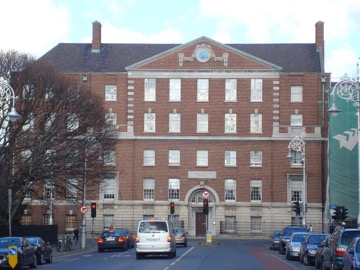
Stephen Dedalus in drunken late night conversation with three medical students (Dixon, Lynch, and Madden). Mr. Bloom arrives to enquire about Mrs. Purefoy, who has been in labour for three days and rescues Stephen.
Read Holles Street Hospital ULYSSES OXEN OF THE SUN 499-561
The National Maternity Hospital |
Holles Street

Stephen Dedalus in drunken late night conversation with three medical students (Dixon, Lynch, and Madden). Mr. Bloom arrives to enquire about Mrs. Purefoy, who has been in labour for three days and rescues Stephen.
Read Holles Street Hospital ULYSSES OXEN OF THE SUN 499-561
14
Finn’s Hotel |
Leinster Street
On the afternoon of the 10th of June 1904, James Joyce first laid eyes on his future wife Nora Barnacle as she stepped out of Finn’s Hotel where she worked as a chamber maid. They had their first date six days later and he cast the action of Ulysses on that day, 16 June.
Finn’s Hotel |
Leinster Street
On the afternoon of the 10th of June 1904, James Joyce first laid eyes on his future wife Nora Barnacle as she stepped out of Finn’s Hotel where she worked as a chamber maid. They had their first date six days later and he cast the action of Ulysses on that day, 16 June.
15
The National Library |
Kildare Street
 This beautiful building, designed by Thomas Newenhan Dean, is featured prominently in the Scylla and Charybdis episode in Ulysses.
This beautiful building, designed by Thomas Newenhan Dean, is featured prominently in the Scylla and Charybdis episode in Ulysses.
Read The National Library ULYSSES SCYLLA AND CHARYBDIS 235-280
The National Library |
Kildare Street

Read The National Library ULYSSES SCYLLA AND CHARYBDIS 235-280
16
Davy Byrnes |
21 Duke Street
 Bloom enjoyed lunch here, a gorgonzola sandwich and a glass of Burgundy wine. “Tom Kernan can dress. Puts gusto into it. Pure olive oil. Milly served me that cutlet with a sprig of parsley. Take one Spanish onion. God made food, the devil the cooks.”.
Bloom enjoyed lunch here, a gorgonzola sandwich and a glass of Burgundy wine. “Tom Kernan can dress. Puts gusto into it. Pure olive oil. Milly served me that cutlet with a sprig of parsley. Take one Spanish onion. God made food, the devil the cooks.”.
Read Lunchtime in Dublin ULYSSES LESTRYGONIANS 190-234
Davy Byrnes |
21 Duke Street

Read Lunchtime in Dublin ULYSSES LESTRYGONIANS 190-234
17
UCD Newman House |
85–86 St. Stephen’s Green
James Joyce was a student here before graduating with a BA in 1902. It features in A Portrait of the Artist as a Young Man. It is now the site of MOLI, The Museum of Literature Ireland.
UCD Newman House |
85–86 St. Stephen’s Green

James Joyce was a student here before graduating with a BA in 1902. It features in A Portrait of the Artist as a Young Man. It is now the site of MOLI, The Museum of Literature Ireland.
18
Volta Cinema |
Mary Street
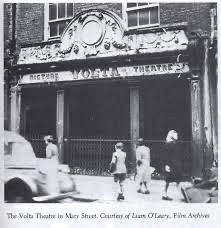
James Joyce visiting from Trieste founded the Volta Cinema, Ireland’s first dedicated cinema on Mary Street in 1909. It opened on Monday 20 December, 1909 to a select audience.
Volta Cinema |
Mary Street

James Joyce visiting from Trieste founded the Volta Cinema, Ireland’s first dedicated cinema on Mary Street in 1909. It opened on Monday 20 December, 1909 to a select audience.
19
Barney Kiernan’s Pub |
8-10 Little Britain Street

The pub is the scene for the Cyclops episode in Ulysses where we meet the Citizen, based on the real-life character of Michael Cusack, founder of the Gaelic Athletic Association (GAA).”So we turned into Barney Kiernan’s and there, sure enough, was the citizen”.
Read Kiernan's Pub ULYSSES CYCLOPS 376-449
Barney Kiernan’s Pub |
8-10 Little Britain Street

The pub is the scene for the Cyclops episode in Ulysses where we meet the Citizen, based on the real-life character of Michael Cusack, founder of the Gaelic Athletic Association (GAA).”So we turned into Barney Kiernan’s and there, sure enough, was the citizen”.
Read Kiernan's Pub ULYSSES CYCLOPS 376-449
20
Ormond Hotel |
7-11 Upper Ormond Quay
Bloom carefully avoids being seen by Boylan as he enters the dining room of the Ormond Hotel and absorbed in listening to the fine musicianship on the piano decides it must be Father Cowley.
Read Concert at the Ormond Hotel ULYSSES SIRENS 328-376
Ormond Hotel |
7-11 Upper Ormond Quay
Bloom carefully avoids being seen by Boylan as he enters the dining room of the Ormond Hotel and absorbed in listening to the fine musicianship on the piano decides it must be Father Cowley.
Read Concert at the Ormond Hotel ULYSSES SIRENS 328-376
21
The Dead House |
15 Usher’s Island
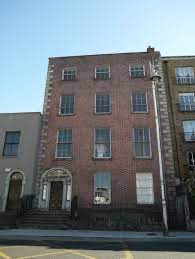
The house at 15 Usher’s Island is the setting for the Morkan Sisters’ annual Christmas party in the short story “The Dead”. The setting is based on the actual home of maternal aunts of Joyce’s mother, known as the Misses Flynn. The house faces on to the James Joyce Bridge which was opened on 16 June, 2003.
The Dead House |
15 Usher’s Island

The house at 15 Usher’s Island is the setting for the Morkan Sisters’ annual Christmas party in the short story “The Dead”. The setting is based on the actual home of maternal aunts of Joyce’s mother, known as the Misses Flynn. The house faces on to the James Joyce Bridge which was opened on 16 June, 2003.
22
Sandymount Strand

Stephen Dedalus takes a morning walk on Sandymount Strand. In the evening Leopold Bloom watches the colourful display from the Mirus Bazaar fireworks with Gertie McDowell. “Am I walking into eternity along Sandymount strand?“.
Read Stephen on Sandymount Strand ULYSSES PROTEUS 45-64
Sandymount Strand

Stephen Dedalus takes a morning walk on Sandymount Strand. In the evening Leopold Bloom watches the colourful display from the Mirus Bazaar fireworks with Gertie McDowell. “Am I walking into eternity along Sandymount strand?“.
Read Stephen on Sandymount Strand ULYSSES PROTEUS 45-64
23
Sandycove Tower
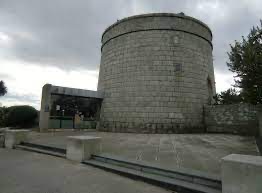
Ulysses begins in the Martello Tower in Sandycove, just south of Dublin, at 8:00 am on the morning of June 16th, 1904. Buck Mulligan calls to his friend Stephen Dedalus to come join him in the morning air. "Stately, plump Buck Mulligan came from the stairhead, bearing a bowl of lather on which a mirror and a razor lay crossed.".
Read Breakfast at the Martello Tower ULYSSES TELEMACHOS 1-28
Sandycove Tower

Ulysses begins in the Martello Tower in Sandycove, just south of Dublin, at 8:00 am on the morning of June 16th, 1904. Buck Mulligan calls to his friend Stephen Dedalus to come join him in the morning air. "Stately, plump Buck Mulligan came from the stairhead, bearing a bowl of lather on which a mirror and a razor lay crossed.".
Read Breakfast at the Martello Tower ULYSSES TELEMACHOS 1-28
24
The School |
Summerfield, Dalkey Avenue
Stephen Dedalus is a teacher in Mr. Deasy’s school for boys in Dalkey. Mr. Deasy asserts that Stephen was ‘not born to be a teacher’. Stephen agrees, claiming that he’s ‘a learner rather’.
Read Stephen at school ULYSSES NESTOR 28-45
The School |
Summerfield, Dalkey Avenue
Stephen Dedalus is a teacher in Mr. Deasy’s school for boys in Dalkey. Mr. Deasy asserts that Stephen was ‘not born to be a teacher’. Stephen agrees, claiming that he’s ‘a learner rather’.
Read Stephen at school ULYSSES NESTOR 28-45
